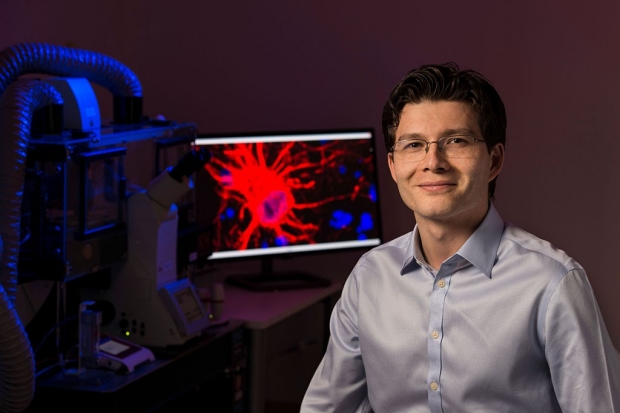Stanford researchers get NIH grant to study autism
By Bruce Goldman
Researchers at the School of Medicine and at UCLA have received a $9.3 million grant from the National Institutes of Mental Health to study the ways that many genes associated with autism spectrum disorder may converge to affect a smaller number of molecular pathways or cellular processes responsible for the condition.
The Stanford team — led by Sergiu Pasca, MD, assistant professor of psychiatry and behavioral sciences — will receive about $4 million.
Pasca’s laboratory has devised a way to produce three-dimensional neuronal cultures called human brain spheroids — tiny round balls of more than 1 million cells each — from induced pluripotent stem cells, or iPS cells. These spheroids, which resemble specific brain regions, can be assembled to serve as a window through which scientists can observe, in a dish, key molecular and cellular processes that take place in a developing human brain.
Pasca and his Stanford colleagues will genetically engineer iPS cell lines carrying mutations in various genes linked to autism spectrum disorder. They will use the resulting iPS cell lines to derive cortical spheroids containing excitatory neurons and ventral-forebrain spheroids containing inhibitory neurons. His group will work closely with co-investigator John Huguenard, PhD, professor of neurology and neurological sciences, and collaborators at UCLA to seek abnormalities in cells derived in these 3-D brain cultures.
The goal is to better understand the roots of the disorder by looking for areas where mutations in numerous disparate genes lead to deficiencies in a much smaller number of biochemical pathways.
